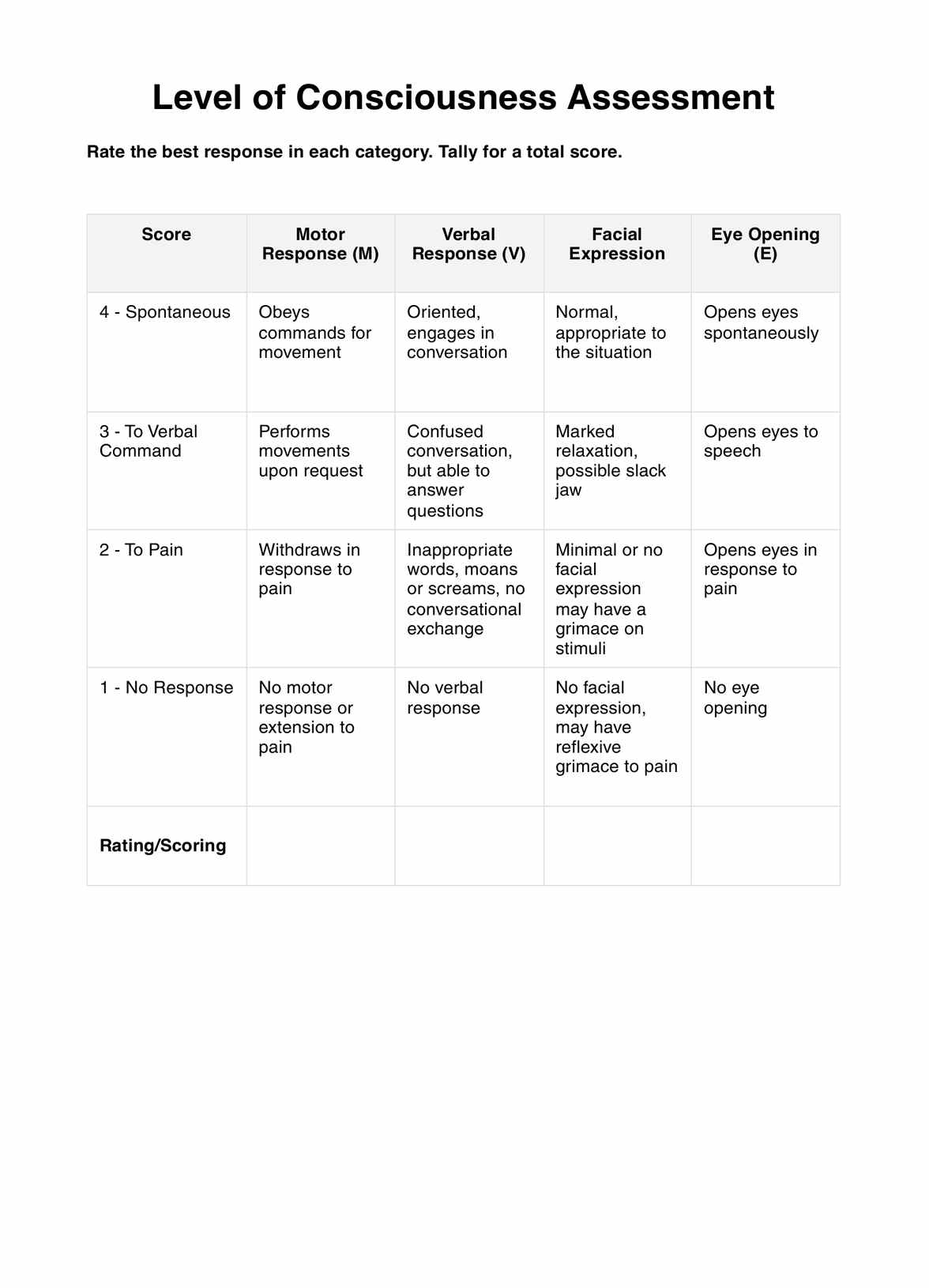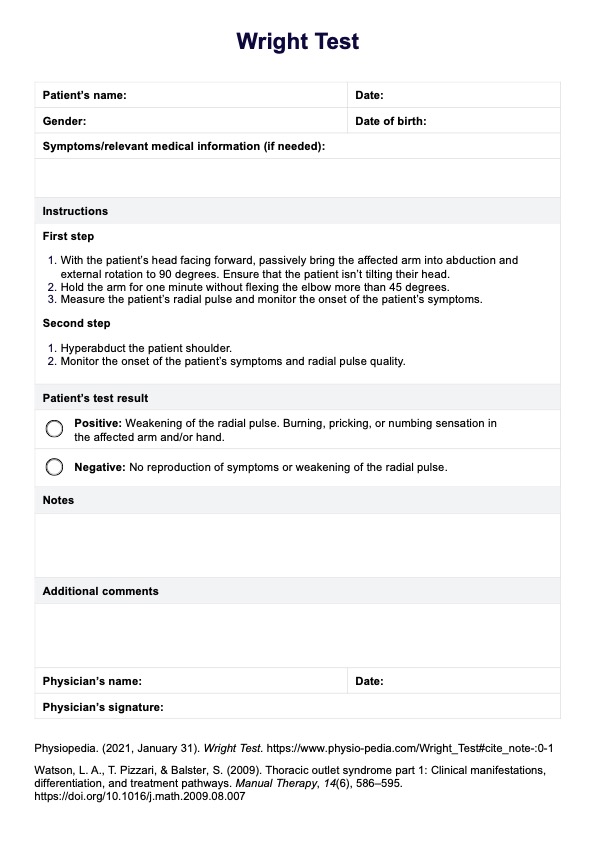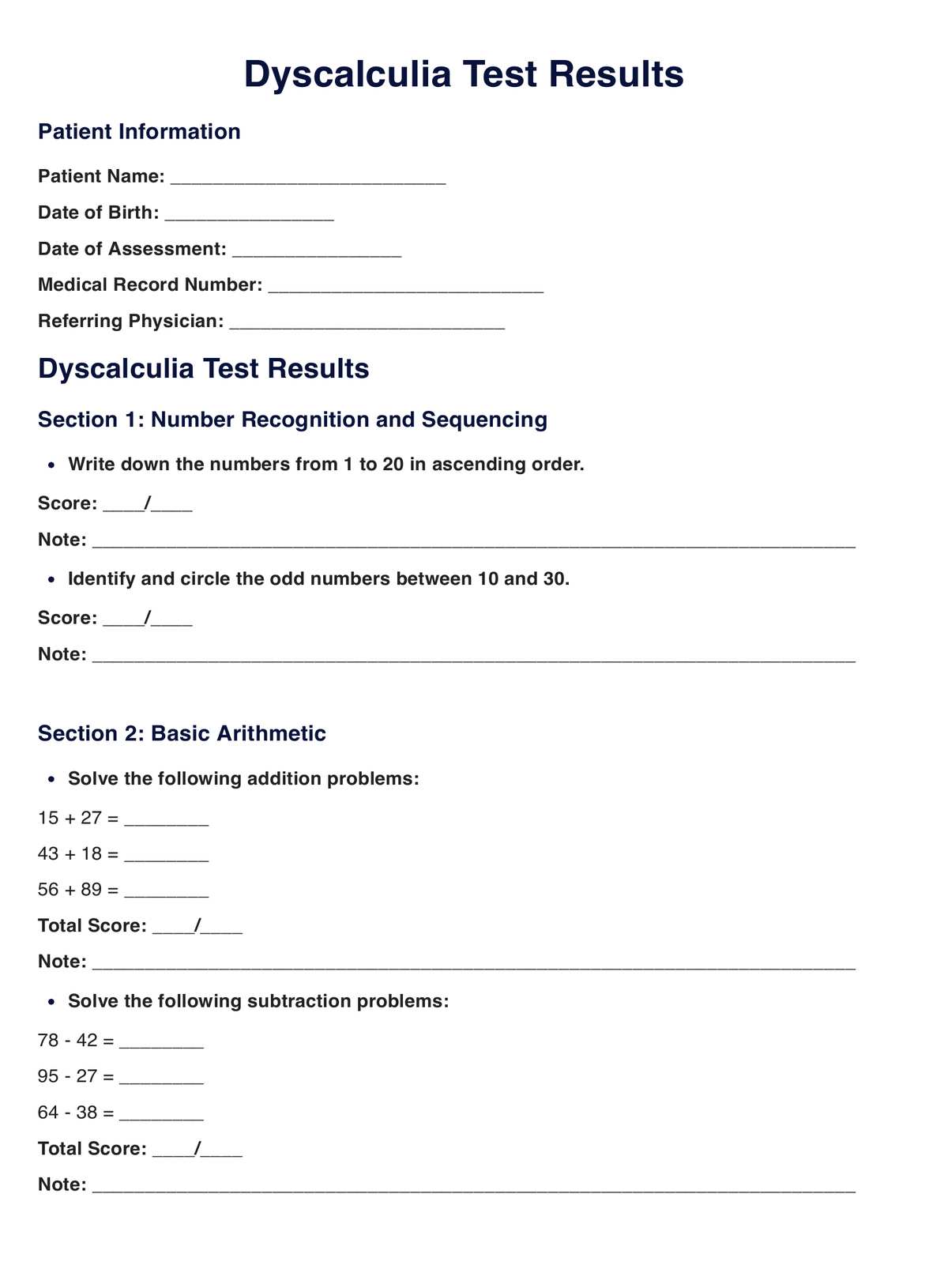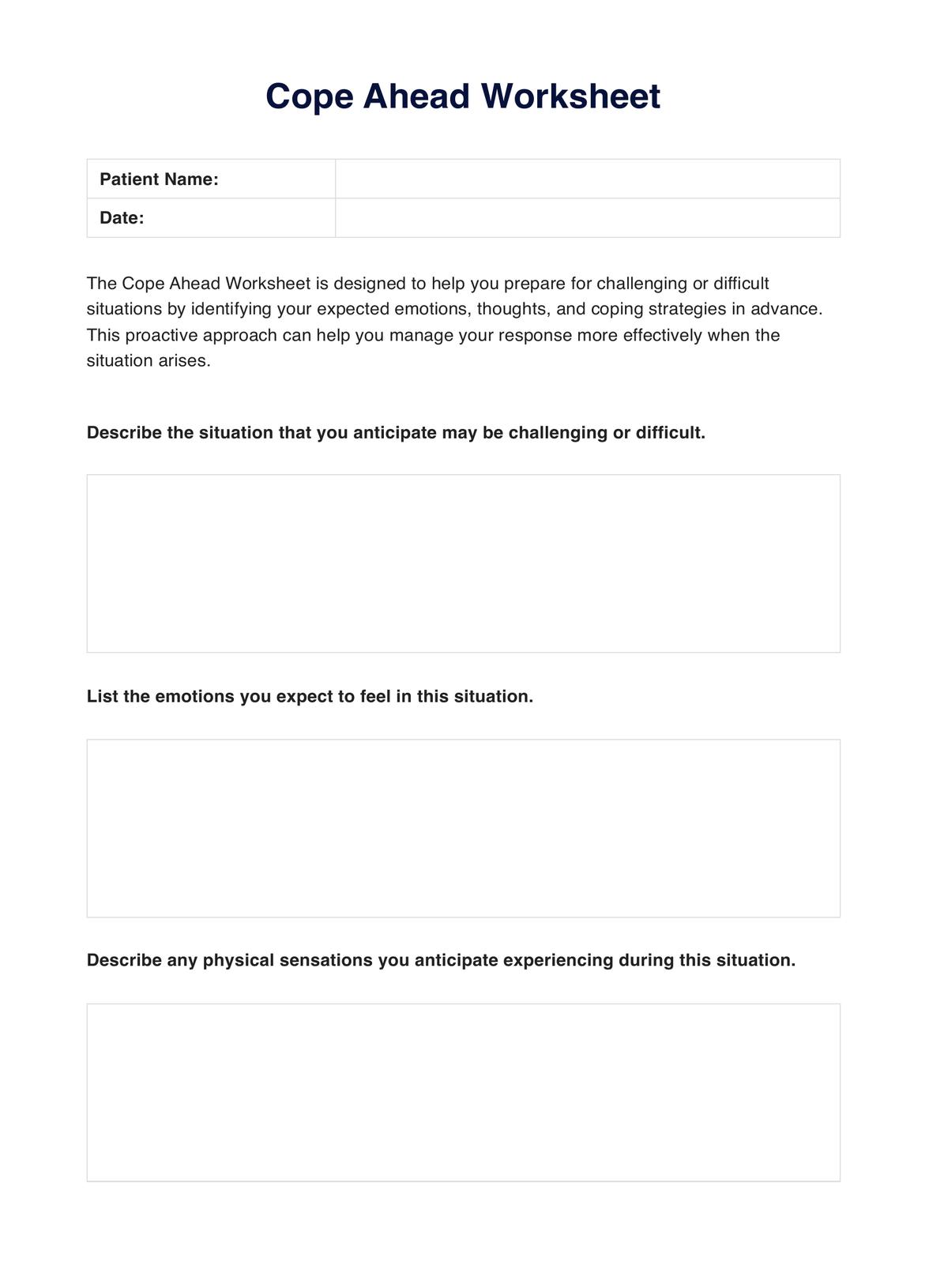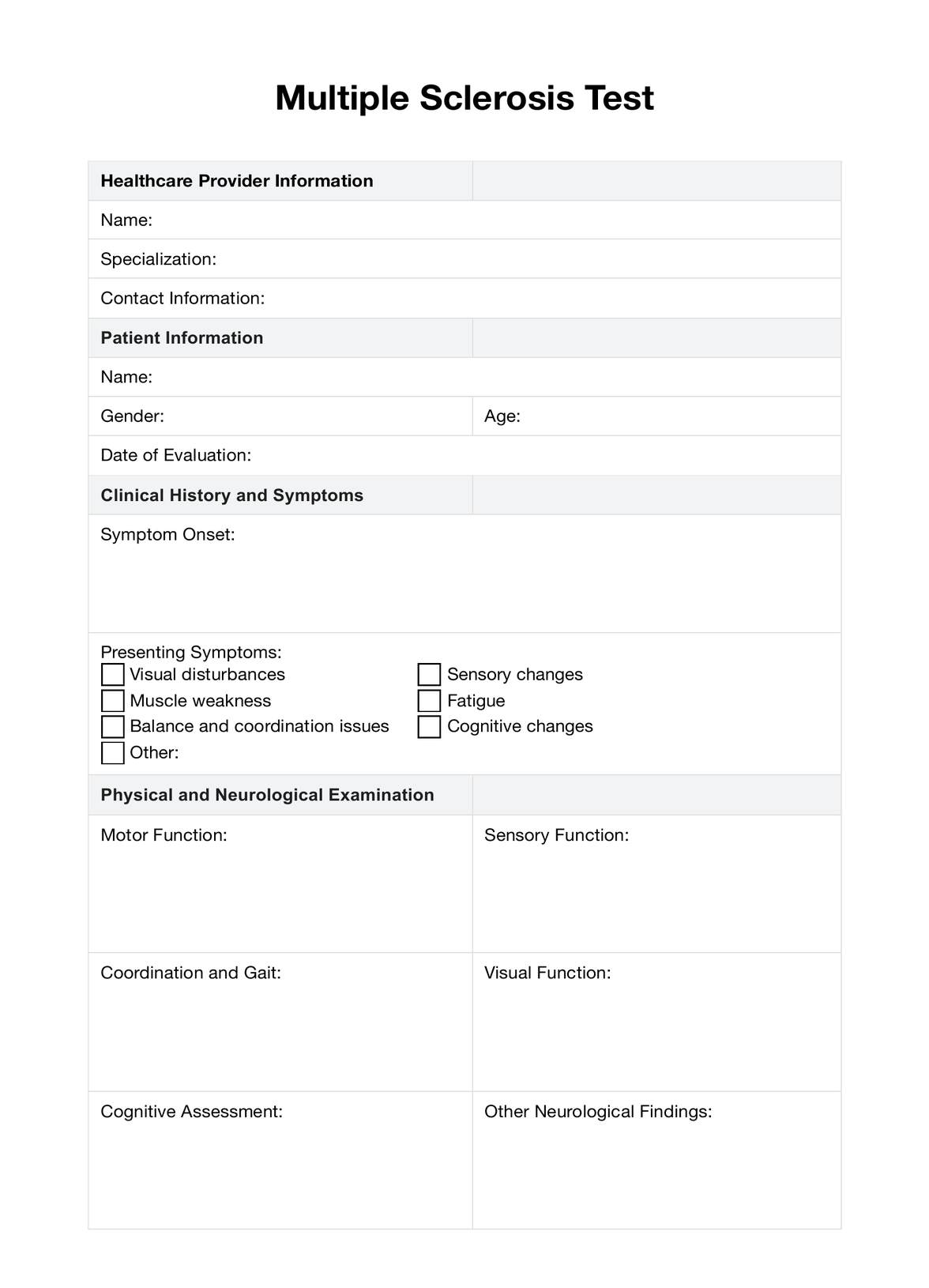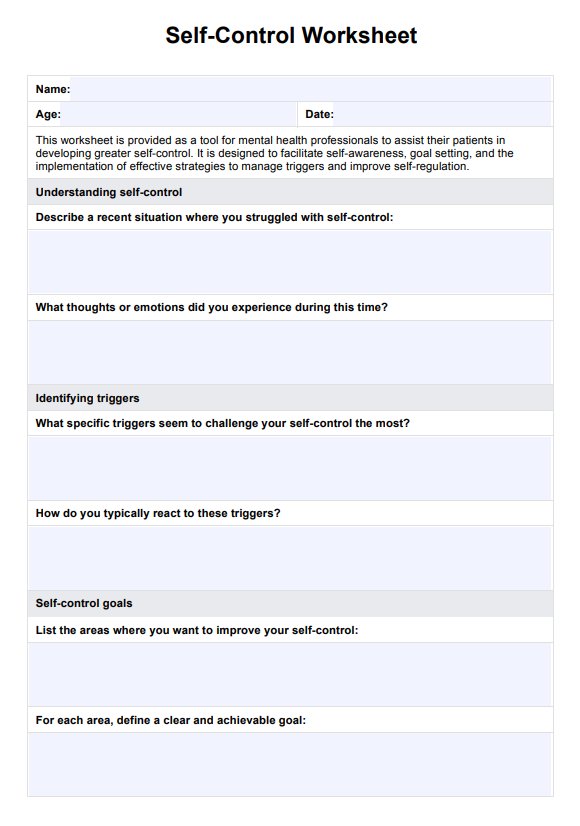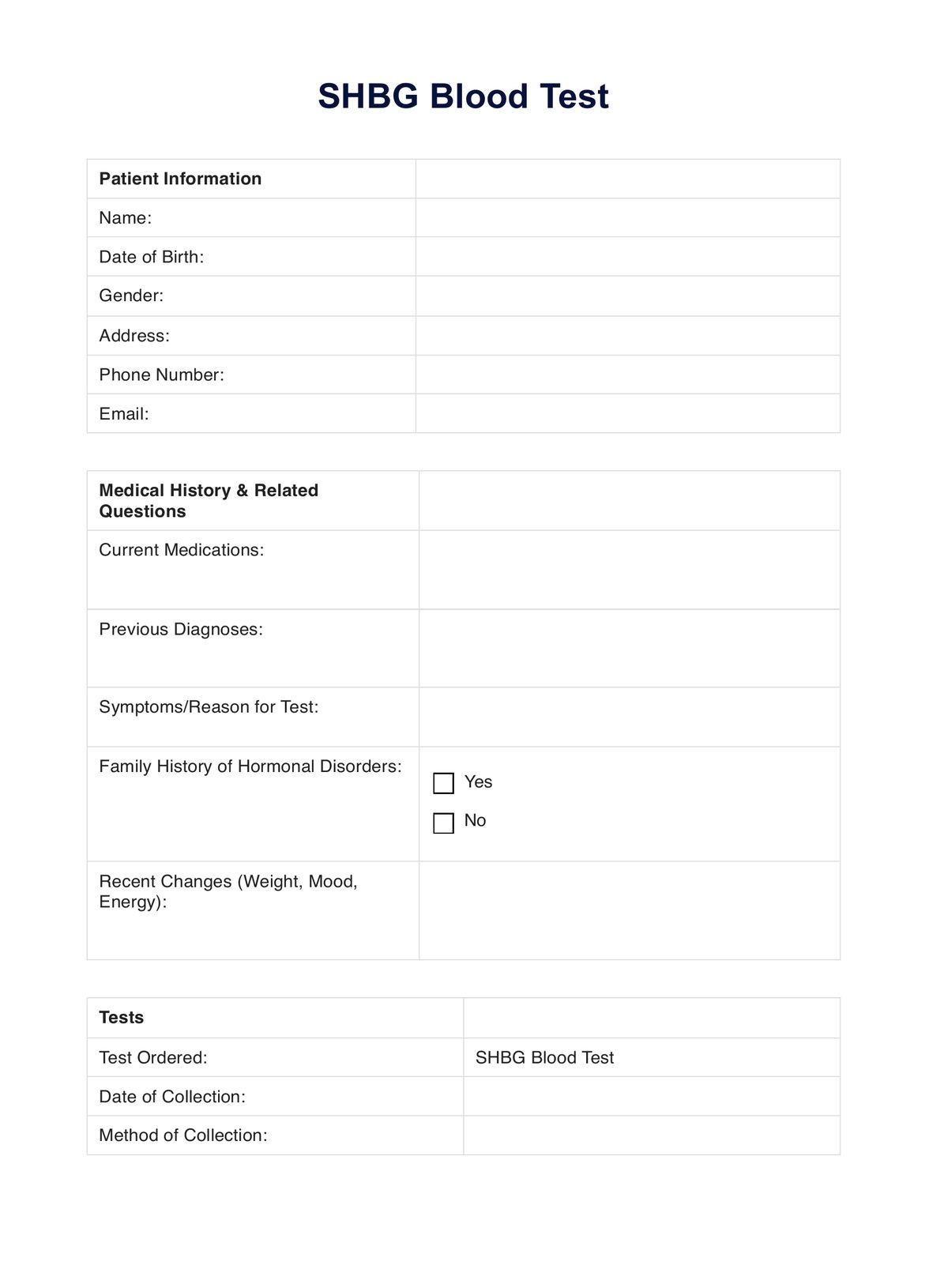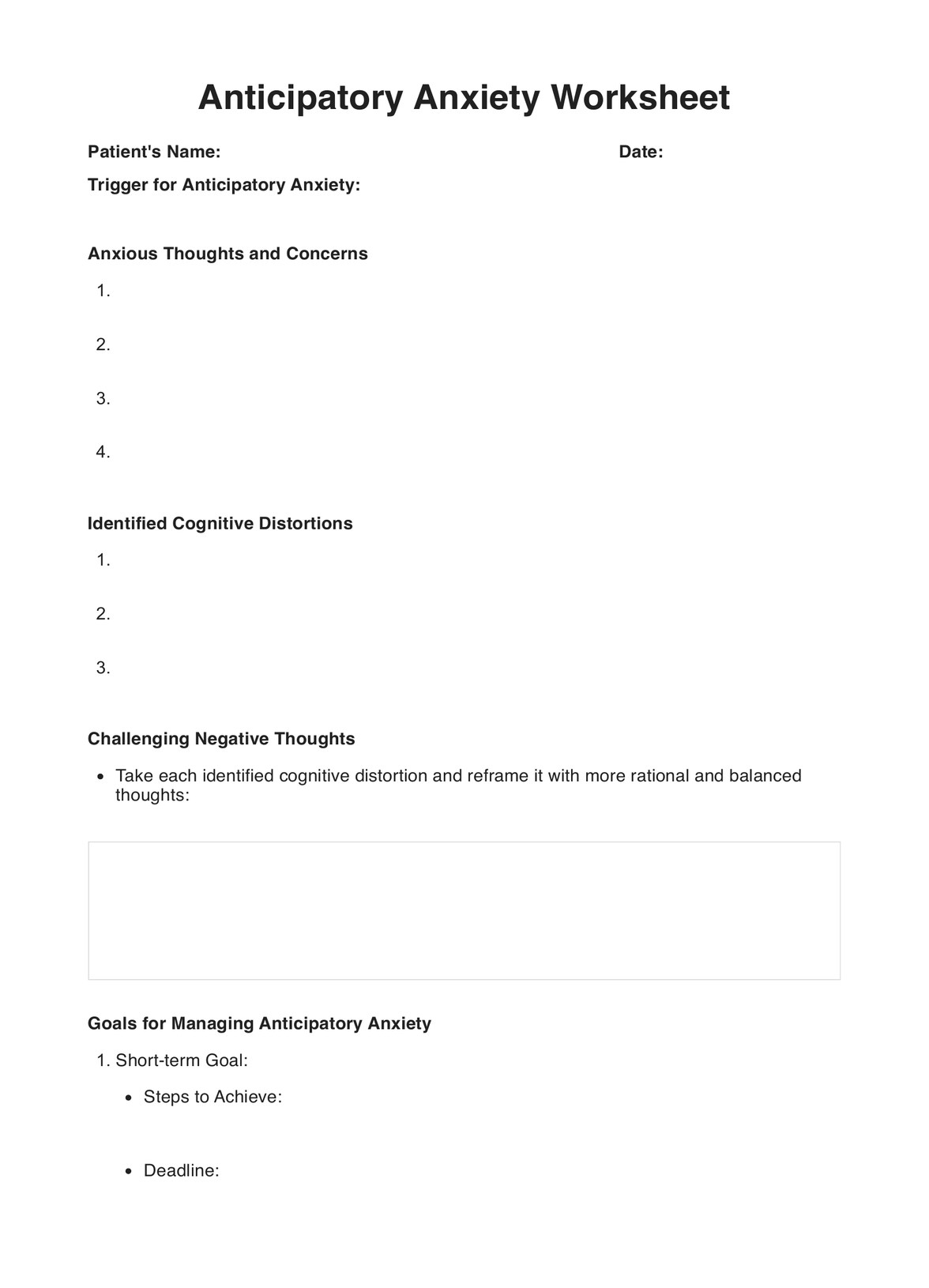Eating Attitudes Test
Discover the benefits of using the Eating Attitudes Test (EAT-26) in our comprehensive guide. Learn how Carepatron can streamline your EAT-26 assessments.


What is an Eating Attitudes Test (EAT-26)?
The Eating Attitudes Test, more commonly known as EAT-26, is a streamlined and validated self-report measure that serves as a crucial initial screening tool for potential eating disorders. This test, an evolution from its more comprehensive predecessor, the EAT-40, focuses its evaluation on three central domains: dieting, bulimia and food preoccupation, and oral control.
EAT-26 is instrumental in detecting behaviors and attitudes that may signify a latent eating disorder, like anorexia nervosa or bulimia. However, it's important to understand that EAT-26 is not a standalone diagnostic tool. Instead, it plays a vital role in identifying individuals who may be at heightened risk, requiring a more extensive clinical evaluation.
The EAT-26 is often used in combination with other screenings and in-depth professional assessments to maximize accuracy and a comprehensive understanding of a person's eating attitudes. It encourages a proactive approach towards early identification, intervention, and management of eating disorders, serving as an effective first step in a patient's healthcare journey.
At Carepatron, we offer online, enabling efficient management, tracking, and a more holistic understanding of health records.
If you're looking for other useful Eating Disorder resources, feel free to watch this video:
Eating Attitudes Test Template
Eating Attitudes Test Example
How does it work?
Using our Printable Eating Attitudes Tests is systematic and straightforward, involving accessing the test, filling it out, scoring the responses, and finally, interpreting the score.
Step 1: Access the Test
The Printable Eating Attitudes Tests are readily available for users to print or download from various online resources. However, for a more interactive, streamlined, and efficient process, you can access a digital version of the EAT-26 on an Eating Attitudes Test application, such as Carepatron, integrated within an intuitive, user-friendly interface. This digitized format enables you to complete, score, and interpret the test all in one convenient location.
Step 2: Complete the Test
The EAT-26 consists of 26 items, each requiring you to reflect on your feelings and behaviors concerning food and eating over the past six months. Honesty and introspection are key as you respond to each question, considering your personal experiences rather than what you believe is the "correct" answer.
Step 3: Score the Test
Following completion, each item in the EAT-26 is scored on a six-point scale, from "never" to "always." Scoring is straightforward, with each response assigned a value contributing to the overall cumulative score.
Step 4: Interpret the Score
Finally, the total score is interpreted. Higher scores on the EAT-26 indicate a greater risk for disordered eating attitudes and behaviors. Specifically, scores exceeding 20 typically signal the potential presence of an eating disorder, warranting further professional evaluation. It's important to remember that this interpretation is a preliminary assessment and should be followed up with more comprehensive diagnostic procedures if required.
When would you use this Template?
The EAT-26, an important psychological tool, is utilized in various scenarios and by multiple stakeholders within the healthcare field. Dietitians and eating disorder specialists, as well as mental health professionals like psychologists and psychiatrists, are the main users of it. They administer this tool to screen individuals who exhibit signs or symptoms or are considered at risk for developing an eating disorder, thus allowing early intervention.
Healthcare professionals often use the EAT-26 in a clinical setting as part of an initial assessment or ongoing therapy. For instance, a psychologist might employ the EAT-26 to understand better a patient's eating attitudes and behaviors as part of a broader mental health assessment. Similarly, a dietitian could use the test to identify disordered eating patterns in a patient struggling with nutritional issues.
Research is another area where the EAT-26 is widely applied. Researchers use this tool in population and clinical studies to examine eating attitudes and behaviors. This usage helps identify risk factors, study the prevalence of disordered eating, and evaluate treatments' effectiveness.
Additionally, individuals can use the EAT-26 as part of self-monitoring or self-help programs. They may employ the test to gain insights into their eating patterns and behaviors. This can lead to self-awareness about unhealthy attitudes towards food and body image, triggering the decision to seek professional help if needed.
It is important to note that while the EAT-26 is a useful tool, it is not designed to provide a diagnosis independently. It should be used as a screening tool to identify potential concerns that warrant a more comprehensive evaluation by a trained healthcare professional. Therefore, if your EAT-26 score suggests a potential risk, consulting with a healthcare professional for a full assessment is recommended.
Benefits
Enhances Self-Awareness
Our Free Eating Attitudes Test provides insight into one's eating attitudes, aiding self-understanding and potentially triggering a search for professional help.
Reliable and Validated
EAT-26 has been extensively researched and validated, making it a trustworthy tool for identifying disordered eating behaviors.
Accessible and User-friendly
Our Free Eating Attitudes Test is available online, making it easily accessible. Its straightforward format also makes it user-friendly.
Comprehensive
EAT-26 covers three main aspects of eating disorders, comprehensively evaluating a person's attitudes and behaviors related to food and eating.
Research and Evidence
The Eating Attitudes Test (EAT-26) has its roots in rigorous academic research. It has stood the test of time as a reliable and valid instrument for the preliminary detection of potential eating disorders. Developed in the late 1980s, the EAT-26 has been integral to clinical practice and research. It began as the EAT-40, but after numerous studies and iterative refinement, the abbreviated and more efficient 26-item version emerged, which maintains robust psychometric properties.
Over the past several decades, countless studies have explored and confirmed the validity and reliability of the EAT-26. The test is grounded in cognitive-behavioral models of eating disorders, meaning it's designed to gauge maladaptive thought patterns and behaviors related to food, dieting, and body image, which are central to disorders such as anorexia nervosa and bulimia nervosa.
Not only has the EAT-26 been validated in multiple populations, but its utility and applicability have also been proven across various cultural contexts and age groups. This attests to the test's versatility and wide acceptance and underscores its relevance for a universal issue such as eating disorders, which transcends sociocultural boundaries.
Moreover, ongoing research continues to refine and validate the EAT-26, keeping it current and relevant in changing sociocultural climates. Its capacity to efficiently and effectively identify potential risks for eating disorders makes it a valuable resource in the early detection and intervention of these conditions.
Nevertheless, it's important to emphasize that while the EAT-26 is a reliable tool for initial screening, it's not a diagnostic tool. It is most effective when used as part of a comprehensive assessment by qualified healthcare professionals. The EAT-26's strength lies in its ability to alert individuals and clinicians to potential issues requiring further, more detailed evaluation.
Commonly asked questions
The EAT-26 is used by healthcare professionals, including psychologists, psychiatrists, and dietitians, to screen for potential eating disorders. It's also used by researchers studying eating attitudes and behaviors.
The EAT-26 can be used as a self-report measure by individuals concerned about their eating behaviors or by healthcare professionals as part of a comprehensive assessment process for eating disorders.
The EAT-26 is a self-report measure where respondents rate 26 items on a scale from "never" to "always". These responses are scored, and higher scores suggest a greater risk of disordered eating behaviors, indicating a need for further assessment.

.jpg)
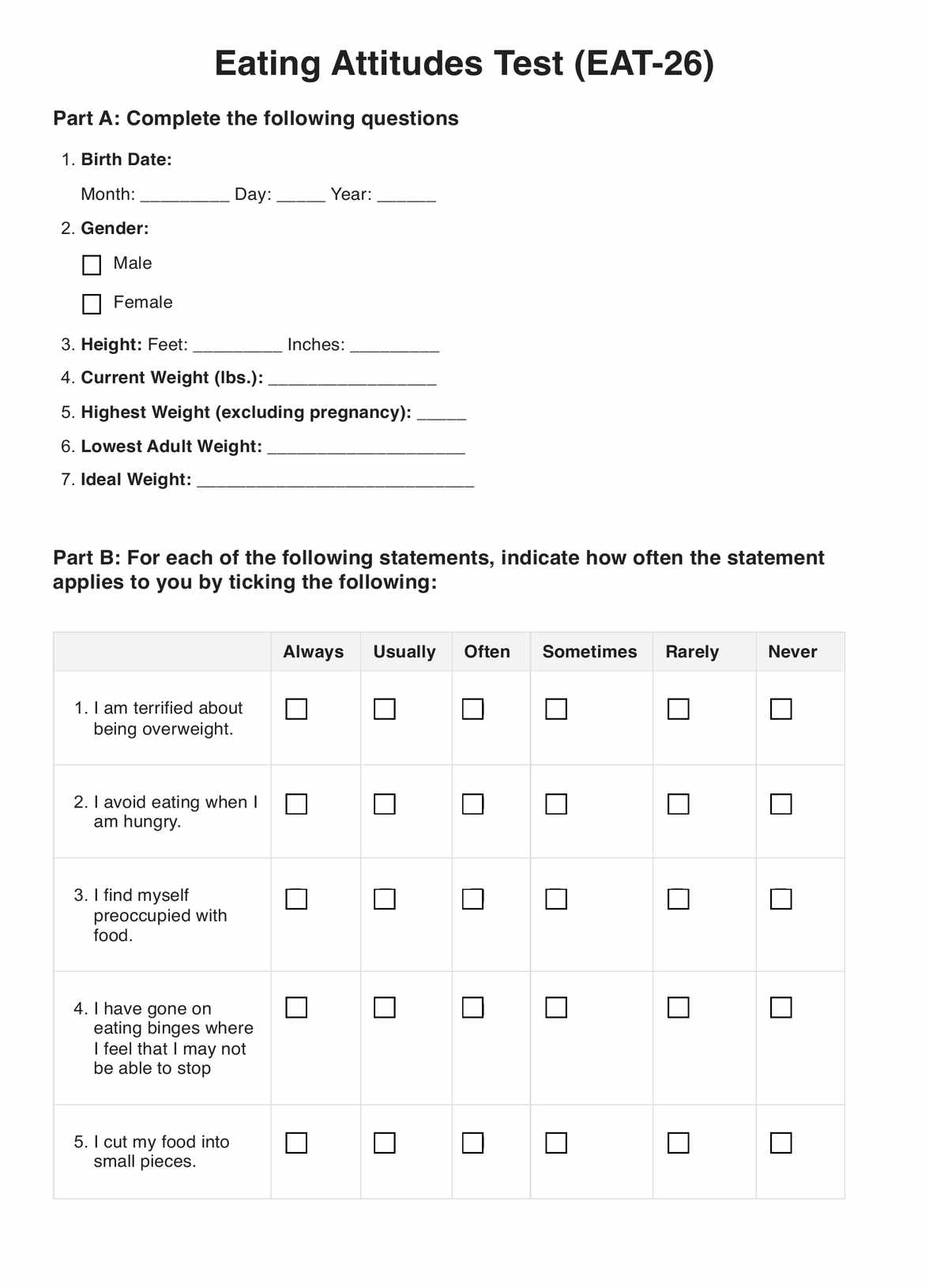
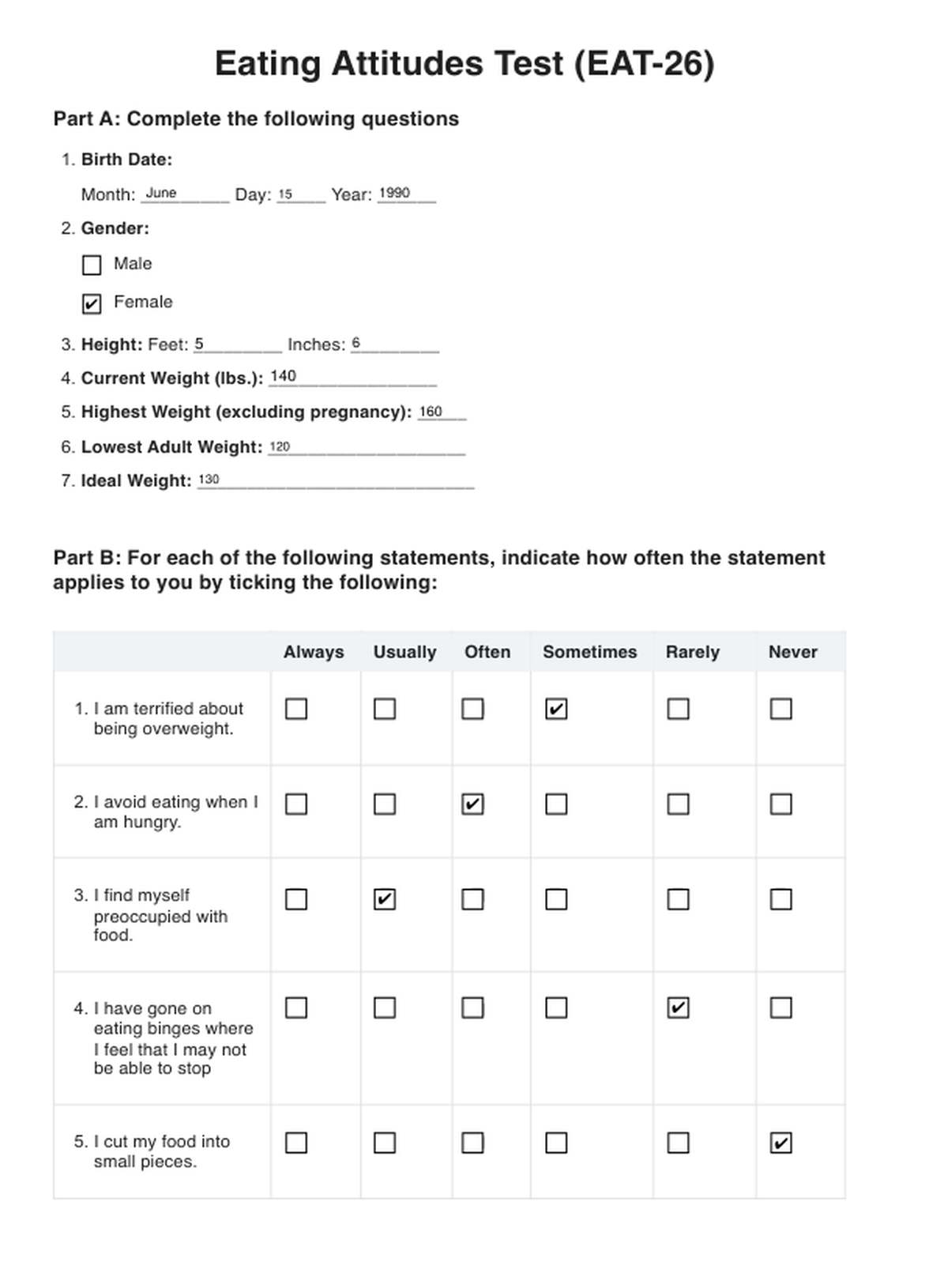

















-template.jpg)


















































































